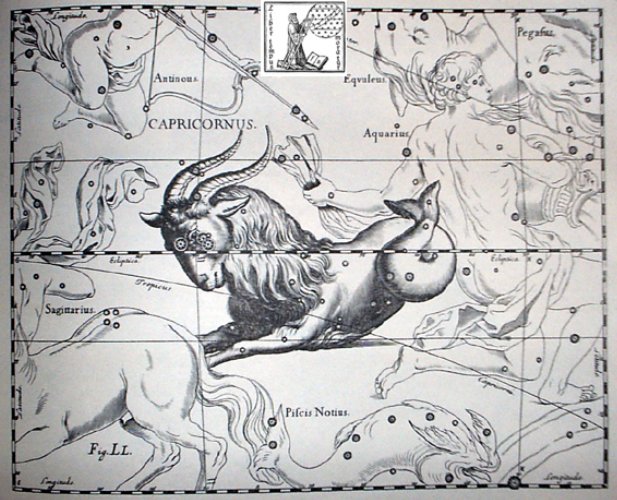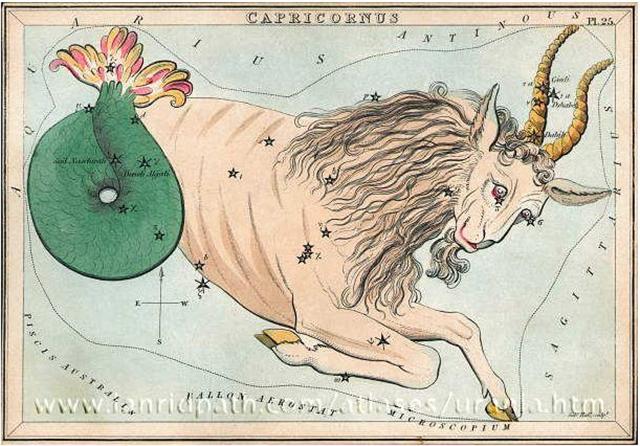At the opposite side of heliacal Alphard (α Hydrae) and the Knot (Ukdah) was nakshatra Sadalsud (β Aquarii, the Luckiest of the Lucky) and the Foundation (Bunda, ξ Aquarii):
At the time of Bharani heliacal Sadalsud was where a new year was beginning, the 5 days of its Foundation. At the time of the Goat heliacal Sadalsud would have been at ●NOVEMBER 26 (where we could count 92 * 6 = 552 = 23 * 24). Nakshatra Sadalsud was at the opposite side of the year, where the other halfyear was beginning. For the Babylonians Sadalsud was their Star of Mighty Destiny (KAKKAB NAMMAΧ). For the Chorti diviners February 9 was a key date when 5 sacred stones were to be fetched from the water: ... On February 9 the Chorti Ah K'in, 'diviners', begin the agricultural year. Both the 260-day cycle and the solar year are used in setting dates for religious and agricultural ceremonies, especially when those rituals fall at the same time in both calendars. The ceremony begins when the diviners go to a sacred spring where they choose five stones with the proper shape and color. These stones will mark the five positions of the sacred cosmogram created by the ritual. When the stones are brought back to the ceremonial house, two diviners start the ritual by placing the stones on a table in a careful pattern that reproduces the schematic of the universe. At the same time, helpers under the table replace last year's diagram with the new one. They believe that by placing the cosmic diagram under the base of God at the center of the world they demonstrate that God dominates the universe. The priests place the stones in a very particular order. First the stone that corresponds to the sun in the eastern, sunrise position of summer solstice is set down; then the stone corresponding to the western, sunset position of the same solstice. This is followed by stones representing the western, sunset position of the winter solstice, then its eastern, sunrise position. Together these four stones form a square. They sit at the four corners of the square just as we saw in the Creation story from the Classic period and in the Popol Vuh. Finally, the center stone is placed to form the ancient five-point sign modern researchers called the quincunx ... Fetching 5 stones from under the water could be compared with when the Sky roof was raised: ... Later on in this series of rituals, the Chorti go through a ceremony they call raising the sky. This ritual takes place at midnight on the twenty-fifth of April and continues each night until the rains arrive. In this ceremony two diviners and their wives sit on benches so that they occupy the corner positions of the cosmic square. They take their seats in the same order as the stones were placed, with the men on the eastern side and the women on the west. The ritual actions of sitting down and lifting upward are done with great precision and care, because they are directly related to the actions done by the gods at Creation. The people represent the gods of the four corners and the clouds that cover the earth. As they rise from their seats, they metaphorically lift the sky. If their lifting motion is uneven, the rains will be irregular and harmful ... Possibly 'April 25' could have meant the nakshatra star date ●APRIL 25 (115). At Ga8-25 (228) we can count July 9 (190) - 183 = January 7 which would be a reasonable day to begin sky rasing ceremonies north of the equator. The hatchmarks inside henua are leaning upwards:
228 (Ga8-25) - 78 (Ga3-19) = 150 = 300 / 2:
The twin stars ρ¹ and ρ² Sagittarii are behind and above π at the neck of the Archer, in the piece of cloth flying high.
In my early description we have now reached calendar day 5 * 13 = 78 and glyph number 27:
According to the Tahitian authorities Alphard was number 5 of 10 stars in their list and it was Ana-heu-heu-po, the pillar 'where debates where held'.
There was a loop not only at the neck of Hydra but also at the tail of the Goat (Deneb Algiedi), possibly marking the last star in Bunda - i.e. nakshatra 46 Capricorni (mago in Ga2-23):
|
|||||||||||||||||||||||||||||||||||||||||||||||||||||||||||||||||||||||||||||||||||||||||||||||||||||||||||||||||||||||||||||||||||||||||||||||||||||||||||||||||||||||||||||||||||||||||||||||||||||||||||||||||||||||||||||||||||||||||||||||||||||||||||||||||||||||||||||||||||||||||||||||||







.jpg)











